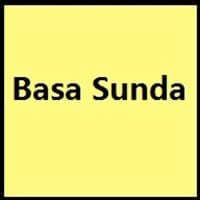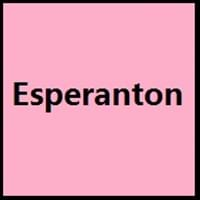Sundanese and Esperanto
Countries
West Java
East Asia, European Union, South America
National Language
Indonesia
East Asia, European Union
Second Language
Not spoken in any of the countries
Central Europe, East Asia, Eastern Europe, South America
Speaking Continents
Asia
Asia, Europe, South America
Minority Language
Not spoken in any of the countries
Not spoken in any of the countries
Regulated By
Not Available
Akademio de Esperanto
Interesting Facts
- The Sundanese language is second most widely spoken regional language in Indonesia.
- The most widely spoken constructed language in the world is Esperanto.
- Esperanto is an artificial international language.
Similar To
Madurese and Malay Languages
Not Available
Derived From
Not Available
Not Available
Alphabets in
Sundanese-Alphabets.jpg#200
Esperanto-Alphabets.jpg#200
Scripts
Latin, Sundanese
Latin
Writing Direction
Left-To-Right, Horizontal
Not Available
Language Levels
Not Available
Time Taken to Learn
Not Available
How Are You?
Kumaha kabarna?
Kiel vi sanas?
Good Night
Wilujeng kulem
Bonan nokton
Good Evening
Wilujeng wengi
Bonan vesperon
Good Afternoon
Wilujeng siang
Bonan posttagmezon
Good Morning
Wilujeng énjing
Bonan matenon
Sorry
Hapunten
Mi bedaŭras!
Bye
Wilujeng angkat
Ĝis poste
I Love You
Abdi bogoh ka anjeun
Mi amas vin
Excuse Me
Punten
Pardonu!
Dialect 1
Western dialect
Not present
Where They Speak
Banten
Not present
Dialect 2
Northern dialect
Not present
Where They Speak
Bogor
Not present
Dialect 3
Priangan dialect
Not present
Where They Speak
Bandung
Not present
Speaking Population
Not Available
Second Language Speakers
Not Available
Native Name
Not Available
Esperanto
Alternative Names
Priangan, Sunda
Eo, La Lingvo Internacia
French Name
soundanais
espéranto
German Name
Sundanesisch
Esperanto
Pronunciation
Not Available
[espeˈranto]
Ethnicity
Sundanese, Bantenese, Cirebonese, Badui
Not Available
Origin
5th century AD
1887
Language Family
Austronesian Family
Indo-European Family
Subgroup
Indonesian
Not Available
Branch
Not Available
Not Available
Early Forms
No early forms
Proto-Esperanto
Standard Forms
Sundanese
Esperanto
Signed Forms
Not Available
Signuno
Scope
Individual
Individual
ISO 639 6
Not Available
Not Available
Glottocode
sund1251
espe1235
Linguasphere
No data available
51-AAB-da
Language Type
Living
Constructed
Language Linguistic Typology
Subject-Verb-Object
Not Available
Language Morphological Typology
Not Available
Agglutinative
All Sundanese and Esperanto Dialects
Most languages have dialects where each dialect differ from other dialect with respect to grammar and vocabulary. Here you will get to know all Sundanese and Esperanto dialects. Various dialects of Sundanese and Esperanto language differ in their pronunciations and words. Dialects of Sundanese are spoken in different Sundanese Speaking Countries whereas Esperanto Dialects are spoken in different Esperanto speaking countries. Also the number of people speaking Sundanese vs Esperanto Dialects varies from few thousands to many millions. Some of the Sundanese dialects include: Western dialect, Northern dialect. Also learn about dialects in South American Languages and North American Languages.
Sundanese and Esperanto Speaking population
Sundanese and Esperanto speaking population is one of the factors based on which Sundanese and Esperanto languages can be compared. The total count of Sundanese and Esperanto Speaking population in percentage is also given. The percentage of people speaking Sundanese language is 0.57 % whereas the percentage of people speaking Esperanto language is Not Available. When we compare the speaking population of any two languages we get to know which of two languages is more popular. Find more details about how many people speak Sundanese and Esperanto on Sundanese vs Esperanto where you will get native speakers, speaking population in percentage and native names.
Sundanese and Esperanto Language Codes
Sundanese and Esperanto language codes are used in those applications where using language names are tedious. Sundanese and Esperanto Language Codes include all the international language codes, glottocodes and linguasphere.





